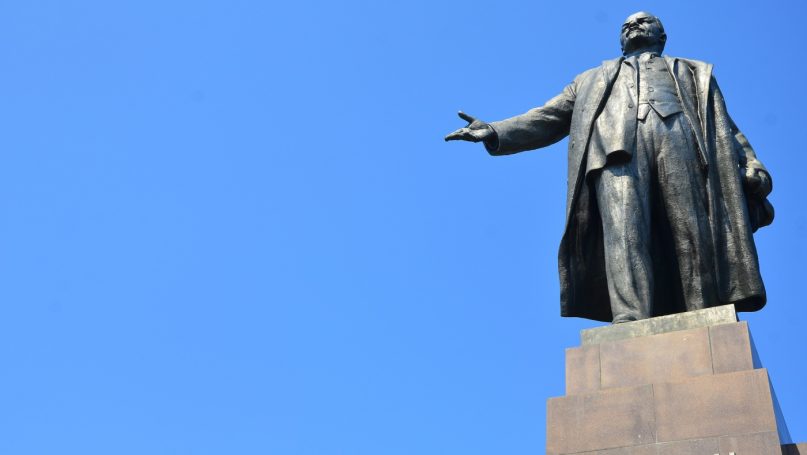
Russia and the New World Disorder
By Bobo Lo
Chatham House, 2015
The political scientist Ken Jowitt first used the term “new world disorder” in the title of a 1992 essay. His purpose was to describe the ideological vacuum created by the Soviet collapse; he argued that new ideologies would rise up and challenge the hegemony of liberal democratic capitalism. More than two decades later, Jowitt’s phrase is pervasive in international relations jargon.
It’s telling that Australian scholar Bobo Lo uses it in the title of his latest book, Russia and the New World Disorder. He began writing this book after Russia’s 2014 annexation of Crimea, the first time a European state has annexed sovereign territory since World War II and (arguably) the symbolic end of post-cold war American hegemony. Disorder certainly captures the spirit of the time. The triumph of Western-led globalization no longer feels inevitable. Old-fashioned great power geopolitics is back on the table. Lo sees the international landscape entering a half-liberal, half-realist phase: “A world that is simultaneously inclusive and fragmented.”
This is Lo’s fourth book and his most noteworthy since 2008. He is concerned with Russia’s response to the new global dynamics, which he considers to pose both a problem and a unique opportunity. His objective is two-fold: to diagnose the causes of Russia’s current foreign policy problems, and prescribe a series of recommendations for helping it build a policy that better advances the interests of the Russian people.
His analysis builds upon several assumptions. Europe remains feckless and the US is in relative decline, leaving a growing power vacuum. But despite its bold behaviour in Ukraine (the book was written prior to Russia’s military intervention in Syria), Russia is responding to—not driving—changes in the international order. Furthermore, notwithstanding its recent success embarrassing the United States and undermining the Western-led world order, its international position is getting worse, not better. Russia’s sclerotic economy and social system hamper its ability to project influence internationally, but in Lo’s words, “a new foreign policy in an old political system is unimaginable.”
The book contains three sections. The first concerns the context of Russian foreign policy, with Lo starting with an analysis of the domestic factors influencing the country’s international approach. He argues that the link between domestic politics and foreign policy is strong, but in a peculiarly Russian way. Rather than domestic interest groups pressuring the state to promote their parochial agendas (like in the US and EU, for example), the opposite is true in Russia. The government uses foreign policy to bolster its position vis-à-vis society. While this idea isn’t wholly original, Lo presents a degree of practical knowledge that far exceeds most analyses of Russia’s internal dynamics.
The book then moves on to external factors, where we see Russia’s nostalgia-driven foreign policy come into contact with the emerging disorder. According to Lo, much of the country’s problems stem from its self-perception in relation to the rest of the world. Russia’s political class harbours an unhealthy obsession with the West. It simultaneously overestimates Western power (hence the belief that NATO missile defence and the EU’s Eastern Partnership initiative pose grave threats to its security) and exaggerates narratives about the West’s decline, believing in the inevitability of its return to global prominence. Russia would benefit from ditching its zero-sum mentality and adopting a more sober view of its role in the world. In Lo’s view, Russia must abandon its “anti-agenda” and build a constructive policy that focuses on achieving concrete goals.
The book’s third and final section is prescriptive. Lo argues that in order for Russia to right its ship internationally, it must implement liberal domestic reforms that strengthen the country’s economy, allow civil society to flourish, and make the government accountable (and legitimate) to the public. Unfortunately, this kind of overhaul goes exactly against the short-term interests of the Kremlin and the country’s economic elite.
How likely are prospects that Russia gets its domestic house in order and recasts the face it presents to the world? Lo is surprisingly optimistic. “The case for long-term stasis is all the more suspect given that far-reaching change is all around us”, he writes. With autarky impossible and authoritarianism unsustainable, “political and economic liberalization might be the only course left.”
The weakest part of Lo’s book is his approach to disorder itself. While he offers an analysis of the current international situation, he expects the reader to take for granted that great powers and multilateral institutions are in steep decline, and that these trends are inexorable. This can be forgiven, as a comprehensive analysis of the international system can fill many volumes in its own right. But given that Lo’s criticisms rest on the assumption that Russia is failing to respond to prevailing forces, one would expect a deeper explanation of what those forces are. He regrettably comes up short here.
This book has few shortcomings and offers an informative and lucid contribution to scholarship on Russia. Lo shows an impressive amount of knowledge on specific policies. He also expertly blends the domestic and international, offering a compelling account of how policy is made in Russia. Finally, he makes a serious attempt to project the country’s future development. Putin may not still be around in 2030, but Lo’s book just might be.